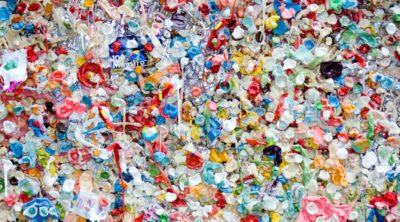
Isn’t it an irony that the world’s biggest garbage dump is located in the world’s biggest ocean. The Great Pacific Garbage Patch, or the Pacific Trash Vortex, is an endless stream of garbage debris that can be found between the states of Hawaii and California, and from Eastern Japan to West Hawaii. So who founded this dump? And who is to blame for putting such an insane amount of garbage in the ocean?
Did You Know?
The Great Pacific Garbage Patch contains almost 3.5 million tons of trash in the form of light bulbs, bottle caps, Popsicle sticks, bottles, cans, fishing gear, polystyrene cups, shoes, toys, and even toothbrushes. Plastic constitutes around 85% of the garbage floating in this great garbage patch.
Despite being discovered in 1997, the great Pacific garbage patch has been notoriously under-reported by the media. Much of the younger generation isn’t even aware that the Pacific ocean has been carrying the world’s biggest landfill for years.
Marine and environmental experts suggest that the formation of this dump began during World War II, when people began manufacturing, using, and throwing out plastics on a large scale. The United States has been a major contributor to this waste, but the garbage in this patch is accumulated from various parts of the world. So all those using water as a way of garbage disposal are as guilty as the Americans.
Who Discovered It?
The existence of this garbage patch was predicted by many oceanographers and climatologists. However, it was actually discovered by Captain Charles J. Moore in 1997, when he and his crew were returning to Southern California after completing a Transpac sailing race. They saw an endless soup of garbage floating in the North Pacific Gyre. Here is what the captain had to say:
So on the way back to our home port in Long Beach, California, we decided to take a shortcut through the gyre, which few seafarers ever cross. Fishermen shun it because its waters lack the nutrients to support an abundant catch. Sailors dodge it because it lacks the wind to propel their sailboats.
Yet as I gazed from the deck at the surface of what ought to have been a pristine ocean, I was confronted, as far as the eye could see, with the sight of plastic.
It seemed unbelievable, but I never found a clear spot. In the week it took to cross the subtropical high, no matter what time of day I looked, plastic debris was floating everywhere: bottles, bottle caps, wrappers, fragments. Months later, after I discussed what I had seen with the oceanographer Curtis Ebbesmeyer, perhaps the world’s leading expert on flotsam, he began referring to the area as the Eastern Garbage Patch.
Great Pacific Garbage Patch Facts

► Termed as one of the biggest environmental disasters, the size of the great Pacific garbage patch is so huge that the state of Texas can fit in it twice.
► This great patch sits on the North Pacific Subtropical Gyre – a gyre is a slow moving circular ocean current formed by the earth’s rotation and its wind patterns. The central area of the gyre is extremely calm and stable, and its circular motion brings the garbage in the center where it is trapped and gradually building up. This gyre has given birth to two humongous garbage masses known as the Western and the Eastern Pacific garbage patches, collectively known as the great Pacific garbage patch.
► A 6,000 mile-long current, called the Subtropical Convergence Zone, connects these two patches, and research has shown that large amounts of trash can also be found in this zone.
► According to research conducted by the Scripps Institution of Oceanography at the University of California, San Diego, the volume of the plastic debris in this patch has increased by 100 times over the last 40 years.
► Other research, also by the Scripps Institute, found almost 9% of fish with plastic waste in their stomachs. Further surveys determined that fish found at intermediate depths in regions affected by the great Pacific garbage patch consume almost 12,000 to 24,000 tons of plastic every year.
► The North Pacific Subtropical Gyre isn’t the only gyre that contains a large concentration of plastic garbage. Huge masses of garbage have also accumulated in the Northern Atlantic and Indian Ocean.
► In 2006, the United Nations Environment Program estimated that every square mile of the affected area contains almost 46,000 floating plastic pieces.
► Plastics can be extremely harmful for marine life in the gyre. This huge mass of plastic and trash floats on the ocean’s surface, and blocks the sunlight beneficial for the survival of algae and plankton situated below. Algae and plankton are considered autotrophs, and sunlight helps them produce their own nutrients. If their survival is threatened then this can upset the entire marine food chain.
► It is estimated that humans produce close to 300 billion pieces of plastic items annually, and about 10% of it is dumped in the ocean, out of which 70% ultimately sinks. It hits the ocean floor and affects marine life, and is ingested by various types of fish and other creatures. The plastic works its way through the food chain, and eventually ends up in humans who enjoying eating sea-food.
► Despite its enormous size, the great Pacific garbage patch isn’t visible by satellite as much of the trash has been broken into extremely tiny particles.
► It is estimated that thousands of sea-birds and marine animals are killed every year by consuming the plastic or by entanglement in the debris. However, the Water Strider, a marine insect is actually thriving in this ever-growing plastic waste.
► Researchers from the Algalita Marine Research Institute say that waste from the land, and not sea, contributes to almost 80% of the marine debris, and around 65% of it is consumer-used plastics that haven’t been recycled.
Are We Doing Anything About It?
As this great garbage patch is extremely far from any country’s coast, no country is ready to accept responsibility or decide a budget that would be required to clean it. However, many international environmental organizations have joined hands and decided to stop the patch from growing.
The common man can also ensure that no more plastic is thrown away in the sea or on land by following the proper methods of disposition, or minimizing the usage of plastic whenever they can.


